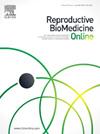BLASTOCYST RE-EXPANSION ONE HOUR POST-BIOPSY: AN INDEPENDENT PREDICTOR OF LIVE BIRTH
IF 3.7
2区 医学
Q1 OBSTETRICS & GYNECOLOGY
引用次数: 0
Abstract
Blastocyst cryopreservation is a key component of PGT-A procedures. In non-PGT-A cycles, collapsing blastocysts before vitrification is commonly recommended to improve blastocyst viability. However, in PGT-A cycles insufficient information is provided on the matter. The European Society of Human Reproduction and Embryology recommends an immediate freeze post-biopsy, although a definitive timeframe remains elusive. Some studies support prolonged culture post-biopsy (> 3 hours), citing improved implantation and pregnancy rates. Conversely, others advocate for rapid cryopreservation, endorsing an immediate approach within an hour, while most blastocysts are still collapsed due to the biopsy procedure. To date, no conclusive timing has been agreed upon. We retrospectively studied 1141 single euploid blastocyst transfers (seFET) conducted between April 2021 and February 2023. Blastocysts were scored at 1-hour post-trophectoderm (TE) biopsy as follows: 0 for complete collapse, 1 for starting re-expansion, and 2 for clear re-expanded cavity.
A total of 569 seFET resulted in live birth (49.8%), 387 (33.9%) did not lead to pregnancy, 76 (6.7%) resulted in biochemical miscarriage, and 107 (9.4%) resulted in clinical miscarriage. One-hour post-biopsy, 64.0% of blastocysts re-expanded to Grade 2, 29.3% to Grade 1, and 6.7% showed no re-expansion (Grade 0). LB rate was 54.2%, 44.3% and 32.5% (P<0.001) among embryos that re-expanded to Grade 2, 1 or 0, respectively. Regression analysis showed re-expanding to Grade 2 at 1-hour post-biopsy was significantly and independently associated with LB compared to embryos that did not re-expand (i.e., Grade 0) (aOR: 1.77, 95% CI: 1.01–3.12), after adjusting for embryo quality (inner cell mass (ICM), TE grade, day of biopsy), BMI and endometrial preparation protocol. Embryos with greater re-expansion 1-hour post-biopsy had higher re-expansion slopes post-warming, indicating faster and greater re-expansion to the point of transfer. Differences were significant for all trophectoderm categories (Grade A, B, and C; P=0.016, <0.001 and <0.001, respectively).
Embryo re-expansion 1-hour post-biopsy was associated with post-warming re-expansion and increased LB rates.
求助全文
约1分钟内获得全文
求助全文
来源期刊

Reproductive biomedicine online
医学-妇产科学
CiteScore
7.20
自引率
7.50%
发文量
391
审稿时长
50 days
期刊介绍:
Reproductive BioMedicine Online covers the formation, growth and differentiation of the human embryo. It is intended to bring to public attention new research on biological and clinical research on human reproduction and the human embryo including relevant studies on animals. It is published by a group of scientists and clinicians working in these fields of study. Its audience comprises researchers, clinicians, practitioners, academics and patients.
Context:
The period of human embryonic growth covered is between the formation of the primordial germ cells in the fetus until mid-pregnancy. High quality research on lower animals is included if it helps to clarify the human situation. Studies progressing to birth and later are published if they have a direct bearing on events in the earlier stages of pregnancy.
 求助内容:
求助内容: 应助结果提醒方式:
应助结果提醒方式:


